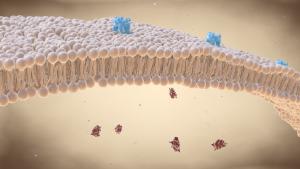In the same section
-
Share this page
ARC: research project "ammonium"
The ‘Ammonium’ nutrient and toxic waste: molecular analysis of transmembrane transport and impact on growth and differentiation’

Bacteria, fungi, and plants import ammonium as a major source of nitrogen; by contrast, in animals, this compound is known for its role in pH homoeostasis and for being toxic when it accumulates. The team has demonstrated that the transport of ammonium through the cell membrane is ensured by a family of proteins known as Mep/Amt/Rh, which includes human rhesus antigens.
This project uses a combination of structural and functional approaches in order to understand the molecular transport mechanisms used by this protein family, but also to shed light on the mechanisms by which cells regulate this transport in response to environmental signals.
The research conducted will contribute to a better understanding of pathologies related to dysfunctions in Rh proteins, but also of the transceptor role that certain fungal proteins play in the progression of the filamentation process, which is generally associated with the virulence of pathogenic fungi. The results will be used to develop therapeutic strategies.
Coordination : Anna Maria Marini - IBMM - Faculté des Sciences
Partner : René Wintjens - Faculté de Pharmacie
Dates
Created on September 3, 2020
